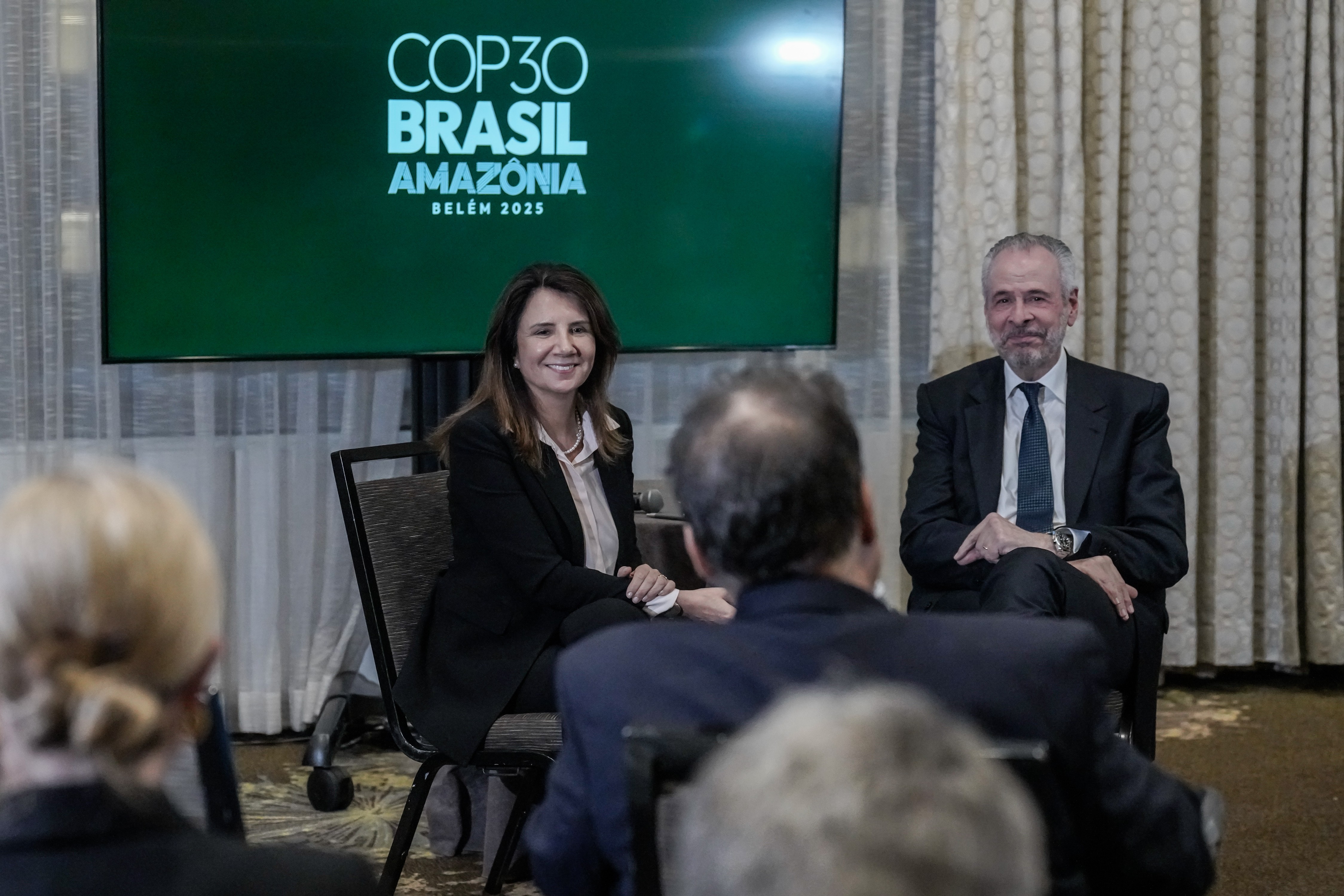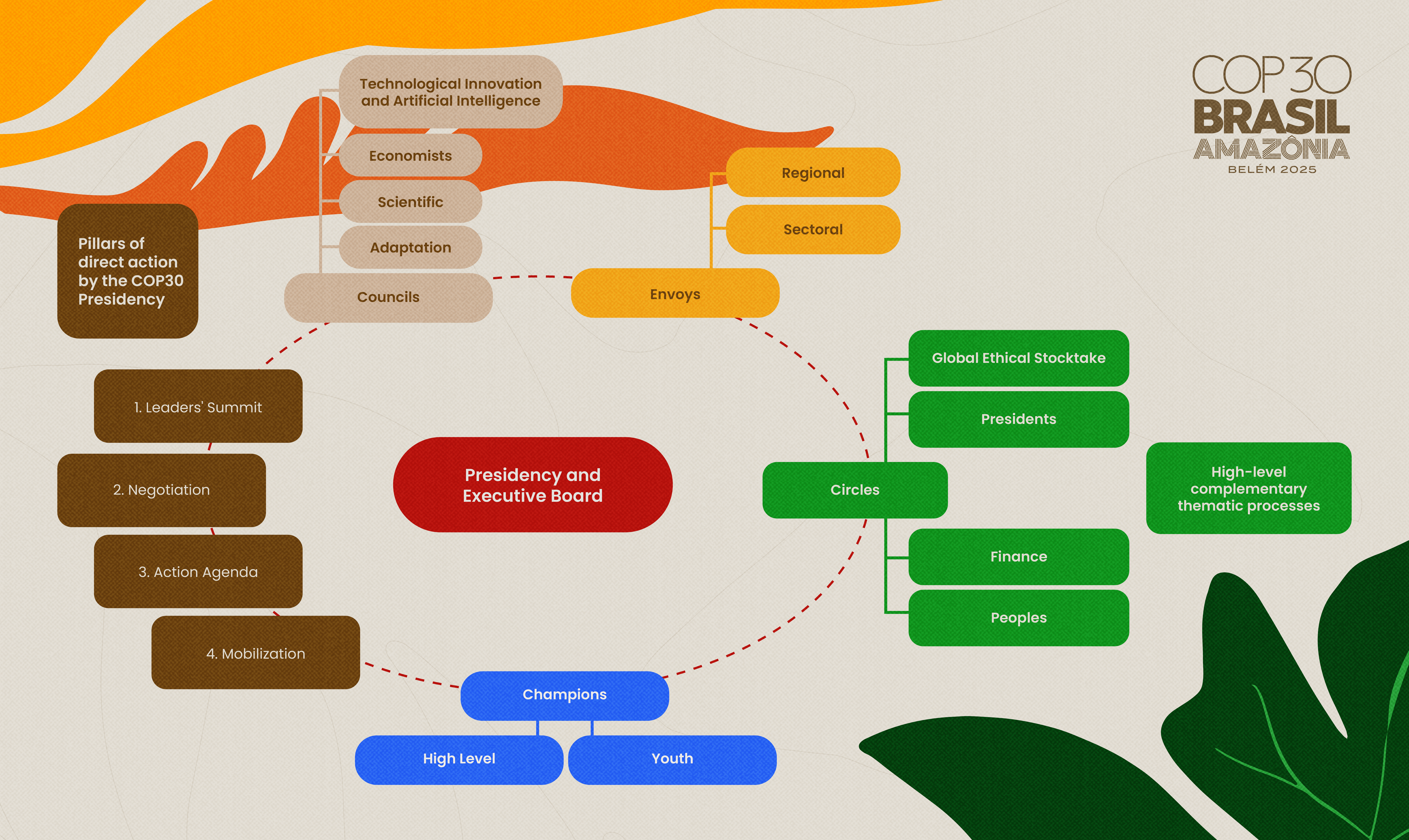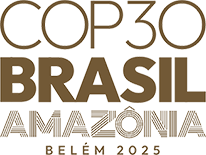Structure of COP30: Understanding the Conference and Brazil’s Innovations
The presidency of this year’s conference has introduced new mechanisms designed to amplify dialogue and ensure broader social participation.

By Laura Marques/COP30
The Conferences of the Parties (COPs) to the United Nations Framework Convention on Climate Change (UNFCCC) have been held annually since 1995—with the exception of 2020, due to the pandemic. These gatherings bring together negotiators from the 198 parties to the agreement, along with representatives from civil society. While the conferences have maintained a consistent basic structure since their inception, the format has evolved over the years to respond to emerging global challenges.
The COP is the UNFCCC’s primary decision-making body, composed of all nations that have signed and ratified the treaty. At the 30th Conference of the Parties, which Brazil will preside over, significant innovations have been introduced to expand spaces for dialogue and strengthen social participation. The central objective is to ensure that, beyond authorities and official delegations, the voices of civil society play a stronger role in shaping the outcomes of the conference.
See what the structure of COP30 looks like:

Presidency and Executive Directorate
Each year, one member nation of the UNFCCC assumes the presidency and hosts the event. In 2025, Brazil will take on that role, with Ambassador André Corrêa do Lago, Secretary for Climate, Energy, and Environment at the Ministry of Foreign Affairs, serving as COP30 President.
The COP President acts as the chief mediator, guiding debates, reconciling divergent positions, and facilitating agreements among nations—always representing the collective interests of the multilateral process. Corrêa do Lago, now the designated president, will officially take office at the start of COP30.
The COP30 Presidency will focus on four key areas of action:
- Summit of Heads of State: On November 6 and 7, Belém will welcome heads of state from around the world to discuss global climate priorities. Though not a deliberative meeting, the leaders’ speeches are expected to set the tone for negotiations throughout the conference.
- Negotiation: Country delegates will gather in the Blue Zone to negotiate concrete targets and policies for implementing the Paris Agreement.
- Action Agenda: Since COP21 in Paris (2015), climate conferences have expanded beyond government negotiations to include an Action Agenda — a platform for voluntary initiatives involving countries, cities, companies, investors, and civil society. Integrated into the formal process, this agenda accelerates emission reductions, boosts climate resilience, and supports the transition to sustainable economies.
COP30’s Action Agenda features 30 key goals and establishes a permanent framework for global mobilization, uniting public and private efforts based on the outcomes of the first Global Stocktake (GST-1)—a Paris Agreement mechanism that evaluates progress every five years. For each goal, activation groups made up of representatives from government, academia, civil society, and the private sector are preparing acceleration plans to be presented in Belém.
- Mobilization: The COP Presidency is also responsible for engaging society in the conference’s debates. Brazil has called for a “Mutirão Global” (Global Collective Effort) to promote broad participation.
Complementing the COP30 Presidency, Ana Toni, Brazil’s National Secretary for Climate Change at the Ministry of Environment and Climate Change, was appointed Executive Director (CEO) of the conference. The position, first created at COP26 in Glasgow, varies in scope each year depending on the host presidency.
At COP30, Toni’s mission is to lead engagement with civil society—expanding participation and deepening dialogue between governments, organizations, and communities.
Climate Champions
Each year, the UNFCCC appoints two Climate Champions to help mobilize climate action worldwide. Acting as bridges between governments and civil society, they coordinate initiatives from cities, companies, and financial institutions to help achieve the Paris Agreement goals.
Their terms last two years, meaning four Champions are active at any given time—two from the previous conference and two from the current one. For COP30, the High-Level Champion is businessman Dan Ioschpe, and the Youth Climate Champion is Marcele Oliveira, whose work focuses on amplifying youth voices and promoting their inclusion in climate policy discussions.
Brazilian Innovations
To strengthen coordination and engagement ahead of COP30, Brazil created “Circles”—thematic groups led by ministers that bring together public, private, community, and international actors to mobilize concrete climate action.
Through these structures, a series of initiatives and debates are being carried out, and their outcomes will be presented to the COP30 Presidency to support and strengthen the discussions. The Global Ethical Stocktake Circle, the Finance Ministers’ Circle for the Roadmap from Baku to Belém, the Peoples’ Circle, and the Circle of Presidents from other COPs have been established so far.
The Councils on Adaptation, Science, Economics, Technological Innovation, and Artificial Intelligence have also been established. These five groups are composed of experts appointed by the COP Presidency to provide strategic recommendations.
In addition, Brazil has appointed Special Envoys to support the COP30 Presidency in engaging with and listening to key sectors and regions that are critical to the success of the conference. The number of representatives exceeds that of previous editions: there are seven international and twenty-two national representatives, all recognized leaders in their respective fields. They serve as points of contact for the Presidency, helping to expand the reach and effectiveness of COP’s preparatory efforts.
Translation : Michel Emmanuel Félix François (POET/UFC)
Proofreading : Tadeu Azevedo (POET/UFC)
